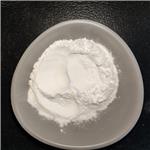Description
Among the carbodiimides available, n-(3-dimethylaminopropyl)-n'-ethylcarbodiimide (EDC) hydrochlorideis commonly used because it is available as an HCl salt, is easy to handle, and the urea by-product, N-(3-dimethylaminopropyl)-N' -ethylurea (EDU), is soluble in water and can easily be removed[1].
Uses
N-(3-Dimethylaminopropyl)-N'-ethylcarbodiimide (EDC) is a carbodiimide coupling reagent commonly used for the preparation of amides from carboxylic acids and amines[1].
Toxicology
N-(3-dimethylaminopropyl)-N'-ethylcarbodiimide hydrochloride (EDC) was considered to be potentially genotoxic; however, later studies determined that EDC is not genotoxic. 4 in vitro Ames bacterial mutagenicity tests indicated EDC is genotoxic, but the reagent is not genotoxic in vivo when administered to rats orally. When administered orally, EDC is hydrolyzed to EDU, which is not genotoxic[1].
References
[1] Kai Cao, Samuel J. Bonacorsi Jr, John A. Brailsford. “Synthesis of stable-isotope-labeled N-(3-dimethylaminopropyl)-N′-ethylcarbodiimide and N-(3-dimethylaminopropyl)-N′-ethylurea.” Journal of labelled compounds & radiopharmaceuticals 63 13 (2020): 526–530.




